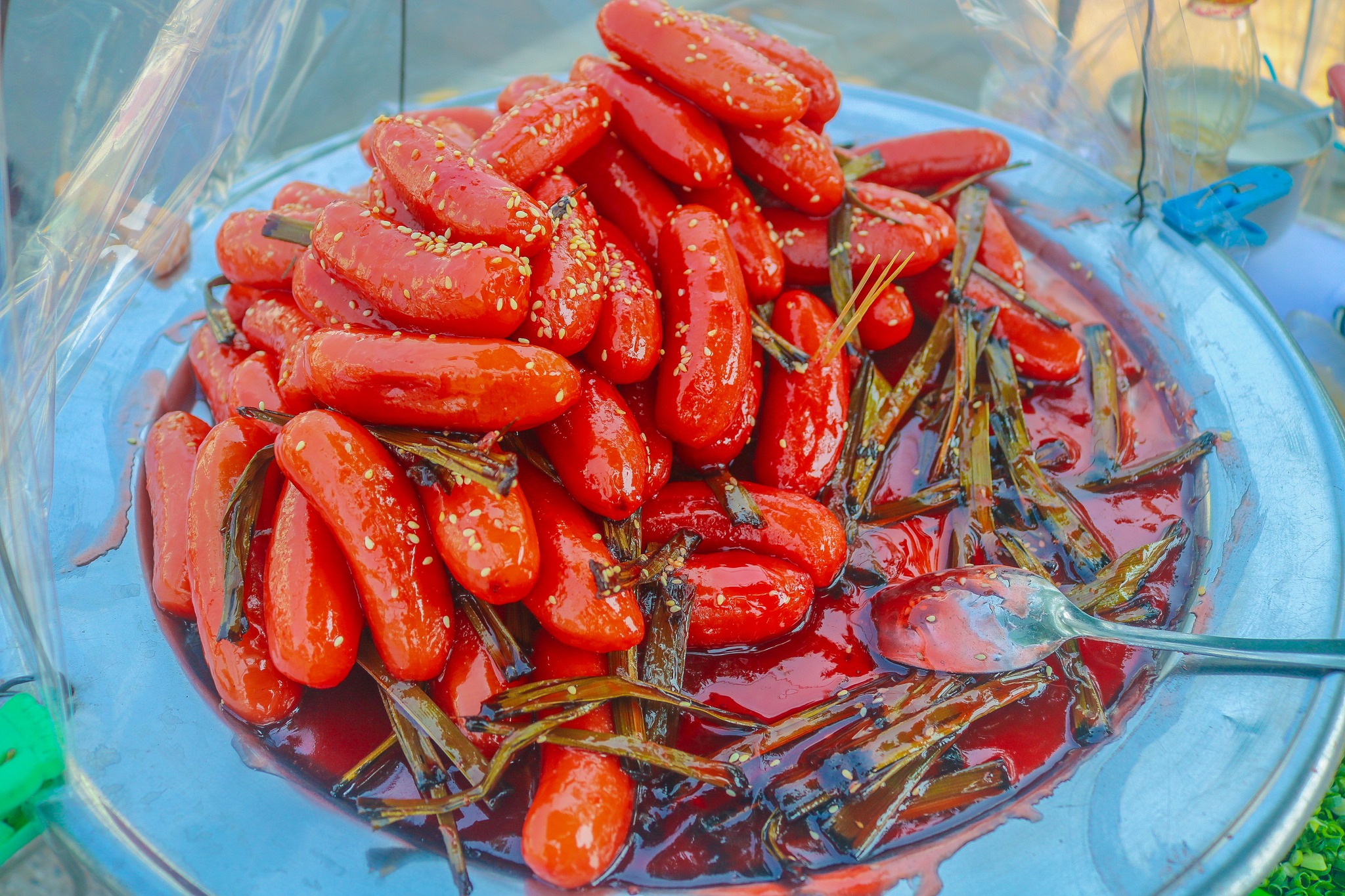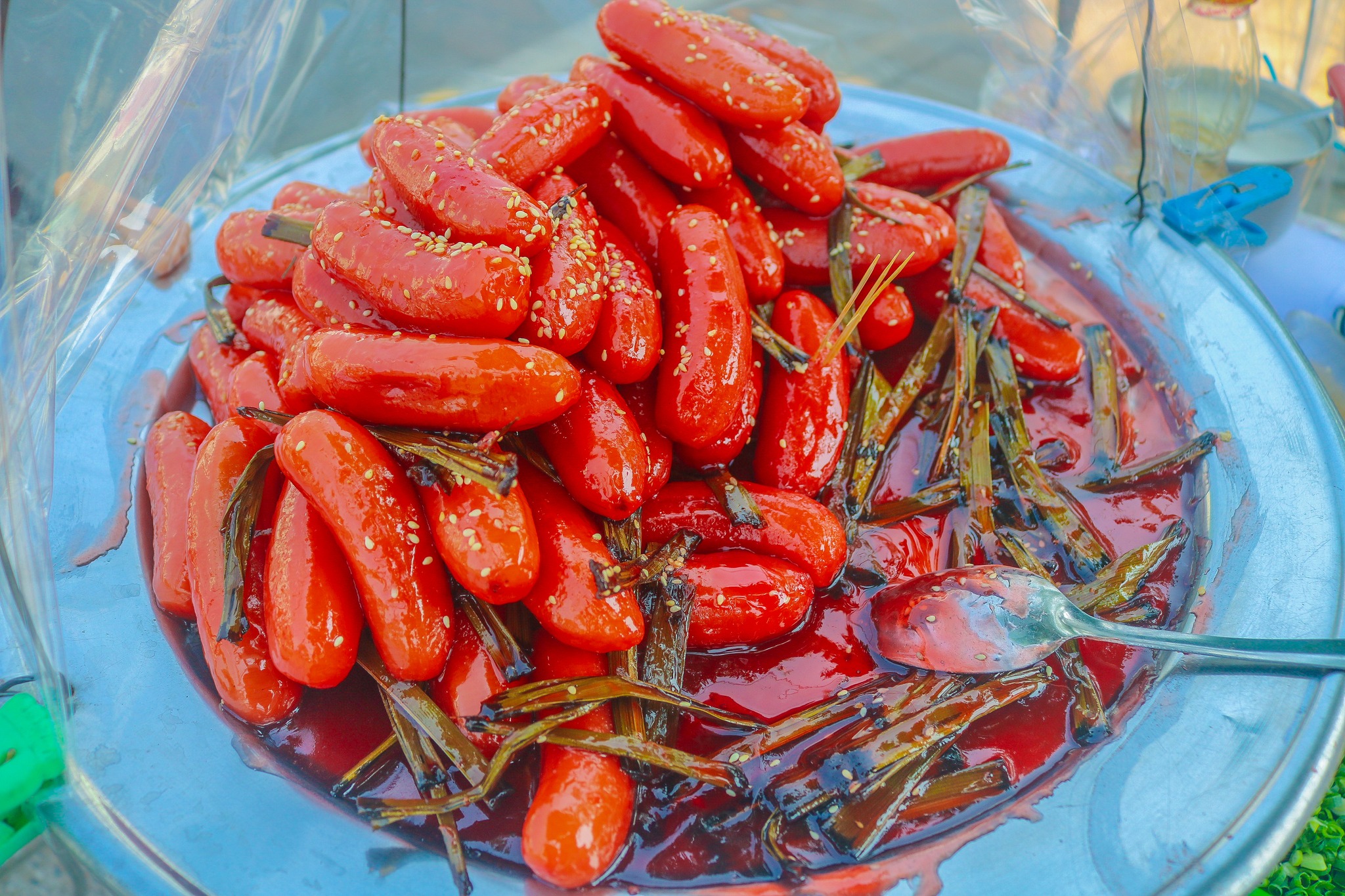Thanh Bui (28 years old) - a graphic designer and photographer currently living and working in Saigon. He was born in Tan Chau, An Giang - a place known as the land of silk because of its long-standing silk craft village. He is currently managing a fanpage called "Tan Chau Downtown", posting pictures and articles about the culture and life in Tan Chau, An Giang.
With his love for his hometown of silk, Tan Chau, a small border town on the banks of the Tien River, he feels that his hometown has many good things that many people do not know about the culture, cuisine, customs and lifestyle of the people.

The specialties of the Mekong Delta are rustic dishes that are both delicious and unique. This place is considered a culinary paradise in the Southwest, attracting many tourists to visit and experience. Photo: Internet
Thanh Bui said: "Countryside dishes are easy to find in the Western provinces, but in my hometown, those dishes have very different flavors. The uncles and aunts I met to take the photo series are all sellers who have been in this land for over 40 years, and the dishes are all made according to family recipes, so they have a unique flavor. You will remember them forever after eating them. At first, I took photos and wrote articles to show my gratitude to those who preserve the flavors of my homeland. Later, many people encouraged me to promote the culture of Tan Chau silk, which inspired me to create a page and received a lot of support from my fellow countrymen. Students studying far away or uncles and aunts and aunts who live far away from home when reading the articles on the page feel more nostalgic for their homeland."
Let's explore with Travellive 6 unique rustic dishes of the West through the lens and sharing of photographer Thanh Bui:
1. Com Du (rice wine) - an "intoxicating" snack in the Southwest region
Com Du (read according to the pronunciation of Westerners) is considered a dish that evokes childhood memories. In terms of preparation, Westerners choose to use regular sticky rice. The sticky rice will be soaked in water for 4-6 hours, then washed, cooked into rice and spread thinly on a tray, let cool. After being crushed, the yeast is sprinkled on the rice and mixed well before being put in a bowl, covered and left in a cool place. After about 2-3 days, when the rice has fermented and has a smell, sugar can be added. The longer the fermentation time, the more sugar in the rice will be converted into alcohol, so people rarely ferment rice wine for too many days.
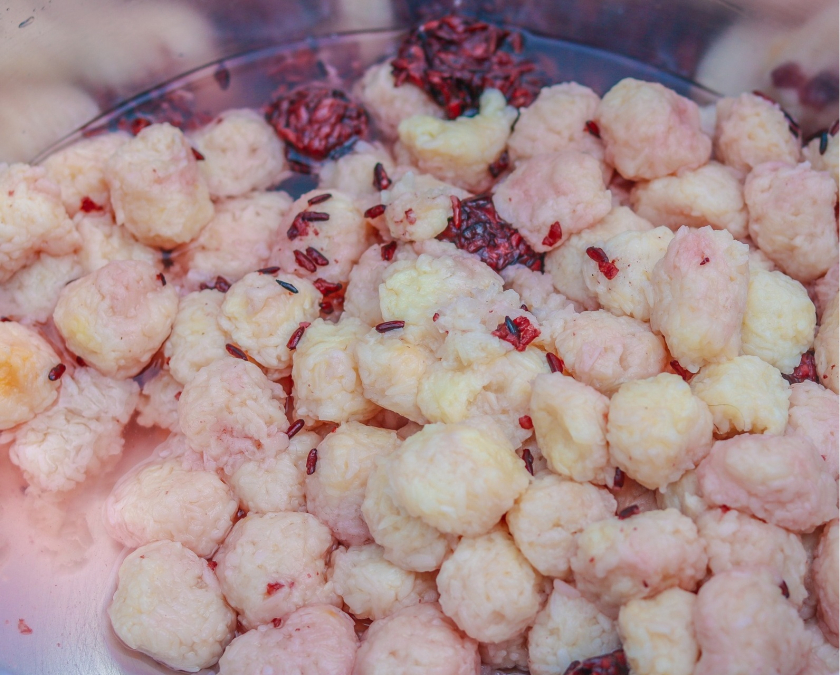
The special thing is that before the fermentation process, Western rice wine will be rolled into small, round balls. Because it is a fermented food, for many people, rice wine can have a fragrant or unpleasant smell.
Many people, although they have known about rice wine since childhood, it took a long time to try this dish. It has a unique aroma, when eating, you can feel the sweet taste of sticky rice, and the strong aftertaste of the yeast. Finally, there is the natural sour taste that is indispensable in most dishes that are "shaped and shaped" by this fermentation method.
Like many other “snack” dishes in the Southwest, rice wine is only eaten to relieve “sickness”, no one ever eats it to be full. Rice wine is the top choice among desserts after every main meal of the Southwest people.
2. Candied bananas - the sweet scent of childhood
The banana blends with the mild sweetness of sugar, the fatty taste of roasted sesame seems to stand out more, making you eat one but still crave for more. To make delicious candied banana, the maker must choose bananas that are not too ripe, still slightly green. After peeling, the bananas are soaked in diluted salt water or alum to remove all the sap, and at the same time help the bananas whiten. Then wash the bananas with cold water, take them out and drain. Many people use wax bananas for candied bananas, but the most Western standard is to use Siamese bananas.
The way to make candied bananas is quite similar to many jams. Add granulated sugar or palm sugar and filtered water, cook until the sugar melts until it turns slightly yellow, then add a few drops of lemon juice to the sugar water to prevent it from solidifying. Next, add the bananas to the pan and stir well. When the sugar is absorbed into the bananas, sprinkle a little sugar evenly over the bananas to create a beautiful color.

Soft bananas coated with a layer of sweet sugar are a snack associated with the childhood of many children in the Southwest region.
"When we were kids, we loved sweets like cakes and candies, but caramelized bananas were our favorite," Thanh Bui said.
The cool, chewy banana flavor blends with the natural sweetness of palm sugar, topped with a little fragrant, fatty roasted sesame. Things that seem familiar, few people expect that when mixed together, they will create a strange, new flavor.
3. Banh Khot - rustic from the name
In different regions, banh khot is varied and varied. In the Western provinces, especially An Giang, banh khot is similar to Khmer cake. It is made from rice flour mixed with coconut milk and chopped green onions.
"The name 'khot' cake is explained by many people because when pouring the cake, to take the cake out of the mold, people have to use a spoon to stir it up, when the spoon touches the mold, it makes a 'khot khot' sound, the name of the cake also starts from that. But there is also a way to explain the name of the cake in another meaning. That is, in the past, poor people did not have enough money to eat delicacies and only ate cakes made entirely of flour without any meat. Therefore, people named that type of cake 'khot', meaning poor (according to ancient words). Over time, the name 'khot' was mispronounced as 'khot'," Thanh Bui explained.
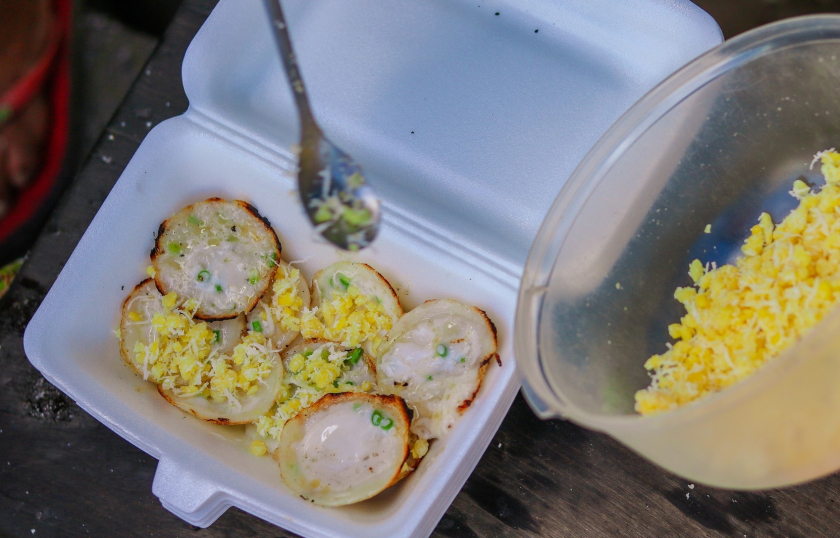
An Giang banh khot does not add turmeric powder to get the yellow color like the usual banh khot and the cake is not eaten with raw vegetables or dipped in diluted fish sauce.
Nowadays, when visiting An Giang, you can easily find a fragrant banh khot shop on the sidewalks of the countryside roads. No matter where you are, banh khot still retains its traditional characteristics, rich flavor that is unforgettable when you enjoy it.
4. Banh Tieu - a simple gift from the river region
In the Mekong Delta, banh tieu is a familiar gift for young boys and girls or a dessert at weddings and first birthday parties.
Banh tieu is one of the famous fried cakes of the Chinese. The cake was made in the 1930s by a tea shop owner, inspired by the combination of wheat flour mixed with baking powder and sesame. In some provinces in the West, people eat banh tieu with banh bo. The fatty aroma of banh tieu blends harmoniously with the soft sweetness of banh bo, helping diners clearly see the deliciousness of each type of cake.
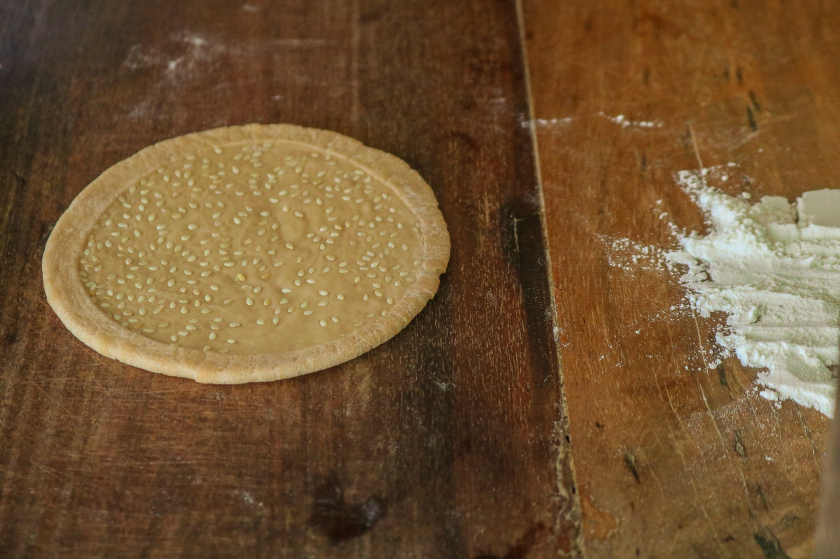
The method is simple but to get the right flavor requires experience.
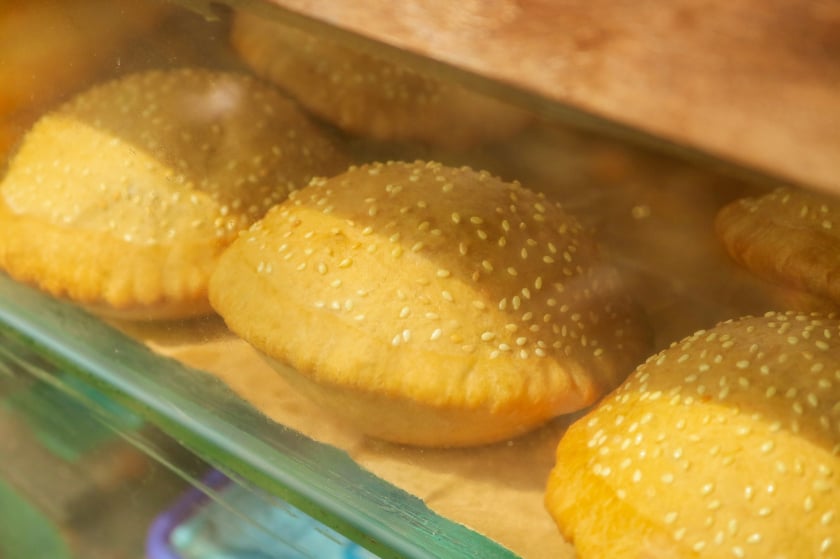
"Every time I eat fried cake, my childhood memories come flooding back," Thanh Bui said.
5. Coconut bean porridge - unique but rich
Every morning, in addition to breakfast dishes such as noodles, bread, sticky rice... bean porridge is one of the great choices of people in the West.
A complete and correct pot of bean porridge must include white porridge cooked with black beans, coconut milk, and can also include a plate of food including linh fish, anchovies, shrimp and pickled papaya. There are two types of porridge: bean porridge and pandan porridge, the food is the same.

A bowl of bean porridge mixed with pandan porridge and side dishes
6. Lia khoi - a dish originating from the Khmer ethnic group
The name “lia” only appears in the headwaters of the Tien River. Because lia in Tan Chau is quite similar to mussels, people often confuse it. Lia has a hard, oval-shaped outer shell, only slightly larger than a fingertip. Lia Tan Chau can be processed into several delicious dishes such as: stir-fried with garlic, boiled with lemongrass… In particular, lia marinated in salt and dried in the sun is the most special rustic dish because of its rich flavor.
Dried lia is processed extremely simply: buy lia, soak it in water overnight, then wash it, drain it, then marinate it with salt, MSG and chili for about two hours, dry it in the sun for three hours and it can be eaten. Lia meat is very rich in protein, fat, minerals... when dried in the sun, the water condenses in the skin, creating sweetness and the meat is very fatty. In addition, the person preparing the dish needs to be careful, ensuring food safety... After being seasoned, lia is dried on a large tin tray to catch the light to keep it warm.
In particular, the liao's pulp is dipped in tamarind fish sauce and eaten with cold rice, which is very delicious. This dish has both salty and sweet flavors, so everyone loves it.
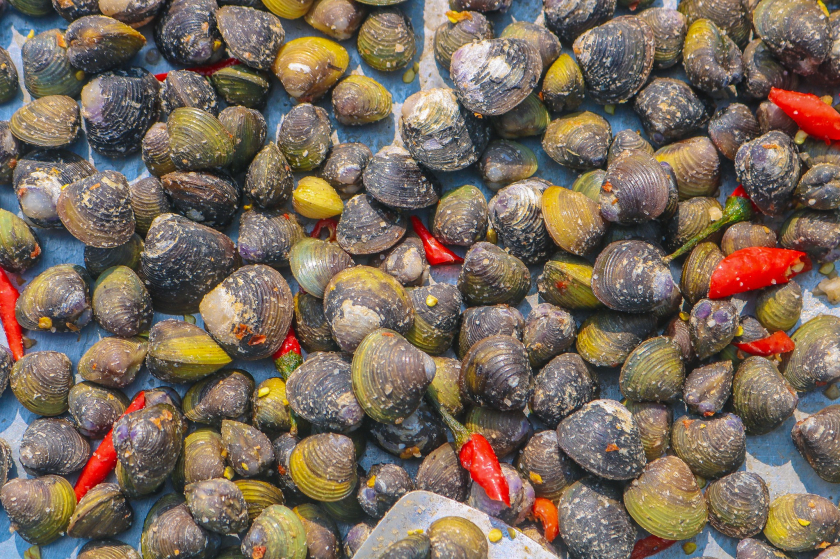
Enjoying lia as a snack or a drink seems to be the true taste of the river.
"An Giang is a land of many cultures such as Cham, Khmer, Kinh, Hoa... In addition, traditional cuisine is also very rich. For example, in Chau Doc, there are fish sauce dishes, crispy fried fish stomach, fish noodles. In Chau Phong, where many Cham people live, there is Tung Lo Mo dish. In Tri Ton, where many Khmer people live, there are papaya dishes, pinned beef, palm-leaf rice cakes. In addition to cuisine, the pagodas and temples, the spiritual life of the beliefs here are very diverse. The people and lifestyle of the people in the West are also very generous and simple. Hopefully in the future there will be many articles as well as many tourists coming to explore thoroughly all aspects of the West, especially An Giang", Thanh Bui said.





